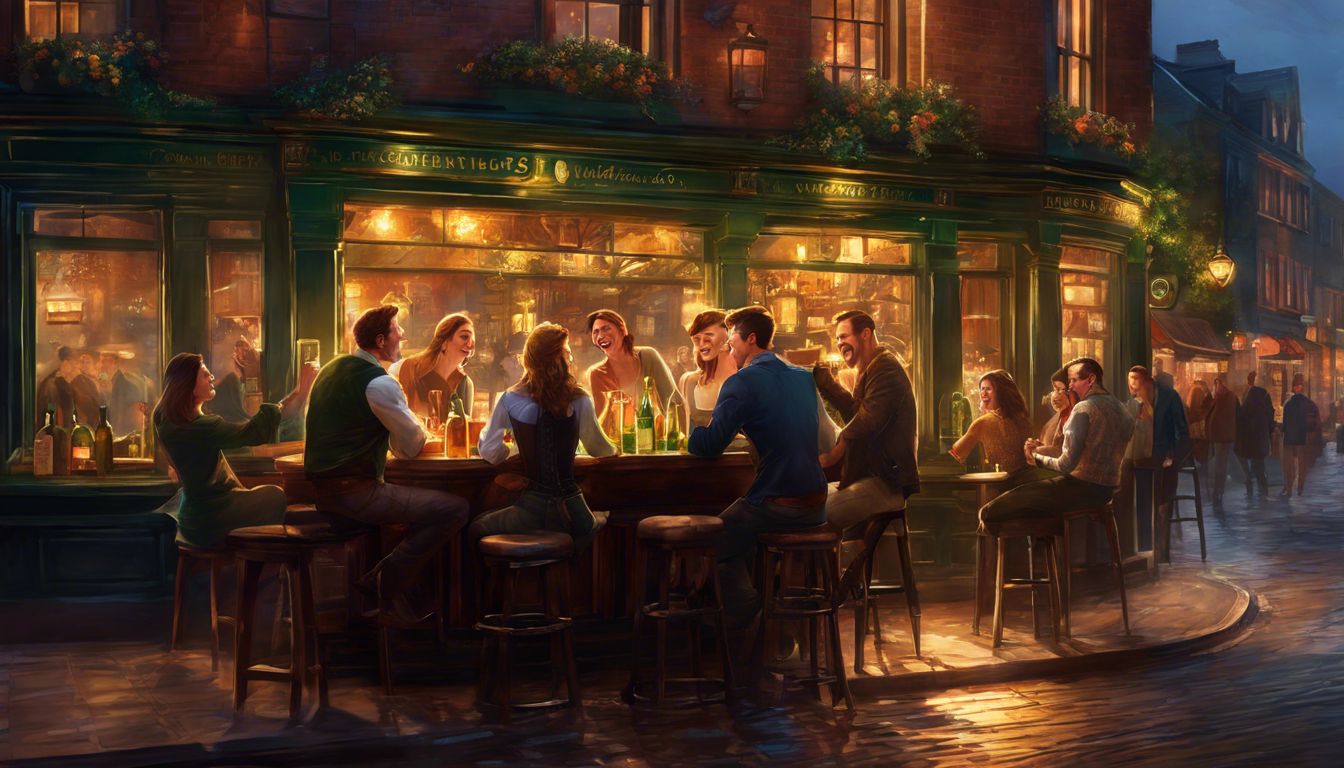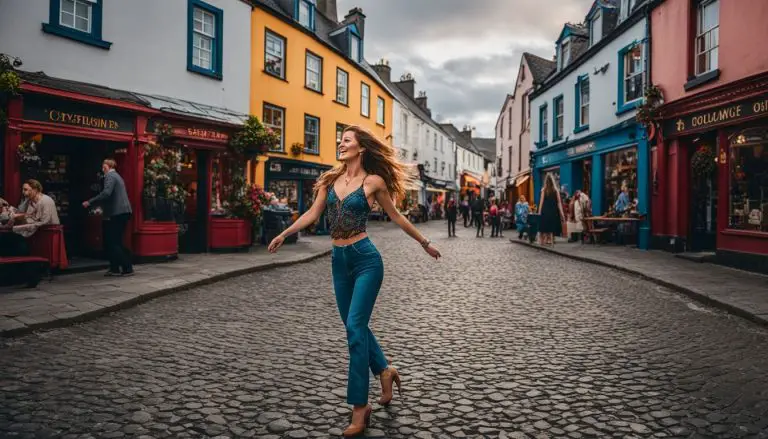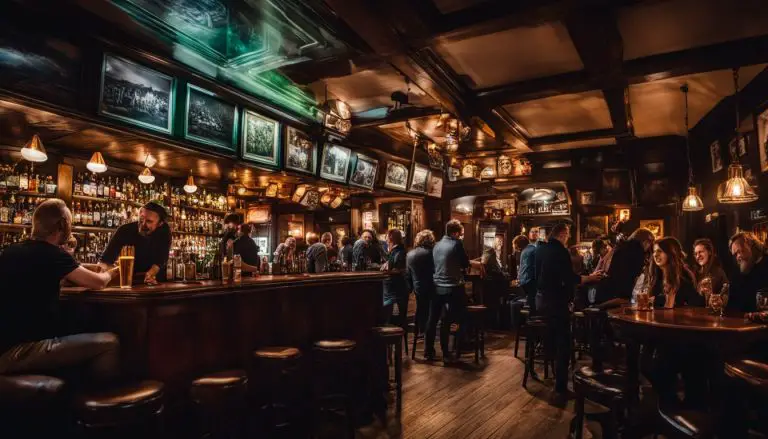How to Say Hello in Irish: A Beginner’s Guide
Saying hello is the first step in making a friend. In Ireland, people greet each other with special Irish words. “Dia Dhuit” means “God be with you” and it’s how many Irish folks say hi.
You say it like “Jee-ah ghwitch.” If someone says this to you, answer with “Dia is Muire Duit,” which adds “and Mary too.” There are also fun ways to ask someone how they’re doing, like “Story horse?” or “Any craic?” These phrases show off the rich cultural ties in the language of Ireland.
To make friends in Ireland, don’t forget your handshake and always start with “Dia Dhuit.” But remember not to use “Top of the mornin’,” as that’s not really what Irish people say.
Saying hello opens doors to new friendships and adventures. Let’s learn how!
Key Takeaways
- Learn “Dia Dhuit” (dee – ah gwit) to say hello in Irish, a traditional greeting that means “God be with you.”
- Get to know regional phrases like “Conas atá tú?” for “How are you?” and parting words like “Slán abhaile” meaning “Safe home.”
- Use informal greetings amongst friends such as “Story horse?” or “Any craic?” to ask what’s new.
- When meeting someone in Ireland, offer a firm handshake and make eye contact as it shows respect.
- Avoid using stereotypes like “Top of the mornin’” which aren’t used by locals.
Saying “Hello” in Irish Gaelic
Dia Dhuit (dee-ah gwit) is the traditional way to say “hello” in Irish Gaelic. There are also other regional greetings that you can learn to greet others in different areas of Ireland.
Dia Dhuit (dee-ah gwit)
Dia Dhuit means “God be with you” in the Irish language. It’s a traditional greeting among Irish speakers. You’ll hear it often in Ireland as people say hello. Pronounce it as “Jee-ah ghwitch.” If someone greets you with Dia Dhuit, reply “Dia is Muire Duit,” which means “God and Mary be with you.” Use this phrase to show respect for Irish culture and language when meeting people.
It’s a warm way to start any conversation in Ireland.
Other regional greetings
In addition to the common greeting “Dia Dhuit,” there are other regional greetings in Irish Gaelic that reflect the diversity of the language and culture:
- “Conas atá tú?” (kun-us ah-taw too) – This friendly greeting is commonly used in the Connacht region of Ireland and translates to “How are you?”
- “Cén chaoi a bhfuil tú?” (kayn khwee ah will too) – Hailing from the Munster area, this phrase also means “How are you?” and is often used as a casual greeting.
- “Cad é mar atá tú?” (kad ay mar ah-taw too) – This phrase, originating from Ulster, is another way to ask “How are you?”
- Slán abhaile” (slawn ah-vuh-luh) – While not a greeting, this parting phrase meaning “Safe home” is commonly used in various regions of Ireland when saying goodbye.
Incorporating Common Irish Expressions
Add some fun and authenticity to your greetings by incorporating common Irish expressions like “Story horse?” or “Any craic?”. These phrases are a great way to break the ice and connect with locals in Ireland.
“Story horse?”
“Story horse?” is a curious and informal way to ask “What’s the news?” or “How are you doing?” in Irish. It’s often used playfully among friends and family, reflecting the warm and friendly nature of Irish culture.
Understanding this unique greeting can offer enthusiasts of Irish culture an insight into the language’s casual communication style while also expanding their repertoire of traditional expressions.
Irish speakers may use “Story horse?” as a lighthearted way to initiate conversation, demonstrating the welcoming and engaging nature of Irish interactions. Embracing this phrase provides an opportunity for language learners to immerse themselves in the rich tapestry of traditional greetings found within the vibrant landscape of Irish communication.
“Any craic?”
“Any craic?” is a popular informal greeting in Ireland. This phrase, pronounced as “anny crack,” translates to “what’s happening?” or “any news?” It’s used casually among friends and acquaintances to inquire about the latest happenings or any interesting stories.
Understanding this expression helps you connect with locals and immerse yourself in Irish culture, making it an essential addition to your Irish language repertoire.
Moving on to the next section, let’s delve into the varied ways of greeting others in Ireland and the cultural nuances associated with them.
“How’s she cuttin’?”
“How’s she cuttin’?” is a casual way of asking how someone is doing in Irish culture. This phrase reflects the friendly and laid-back nature of Irish greetings. It’s commonly used to check in on someone’s well-being, similar to asking “How are you?” The informal tone of this greeting makes it a great way to connect with locals and show an interest in their day without being overly formal.
Learning and using this phrase can create a warm and welcoming atmosphere when interacting with people in Ireland or within the Irish community.
Understanding phrases like “How’s she cuttin’?” allows language learners to dive deeper into the rich cultural heritage of Ireland while also gaining insight into the friendly and hospitable nature of its people.
Tips for Greeting Others in Ireland
– Use a firm handshake when greeting someone in Ireland.
– Remember to say “Dia Dhuit” or “Hello” when greeting others.
– Avoid saying “Top of the mornin'” as it is not commonly used.
Use a handshake
Extend a firm handshake when greeting someone in Ireland. It is customary to make direct eye contact during the handshake as a sign of respect and sincerity. This gesture is important in Irish culture and shows that you are genuinely interested in meeting the person.
When greeting someone in Ireland, incorporate a handshake into your interaction as it signifies warmth and openness. Additionally, using a handshake when meeting someone for the first time reflects traditional Irish courtesy and sets a positive tone for your conversation.
Remember to say “Dia Dhuit”
Ensure to greet with “Dia Dhuit” when meeting people in Ireland. This traditional Irish greeting means “God be with you.” Incorporating this phrase into your interactions shows respect for the culture and language.
Embrace the opportunity to immerse yourself in Irish traditions by using “Dia Dhuit” as a genuine and warm way to say hello.
Don’t say “Top of the mornin'”
When greeting someone in Ireland, avoid using the phrase “Top of the mornin’.” It is considered an exaggerated and stereotypical expression that doesn’t accurately represent how people greet each other in Ireland.
Instead, opt for more authentic greetings like “Dia duit” or “Mora duit,” which are traditional and widely accepted. Embracing genuine Irish greetings shows respect for the culture and language and enhances your interactions with locals.
Moving on to – Saying Hello in Irish Gaelic
Conclusion
To conclude, saying hello in Irish is a fascinating part of the culture. Learning phrases like “Dia Dhuit” and “Haigh” can be an exciting step into the world of Irish language. Embracing these traditional greetings brings a deeper connection to Irish heritage.
So, give it a try and spread the warmth of an Irish hello! Keep practicing for a bit o’ fun!
FAQs
1. What are some common Irish hello phrases?
Some basic Irish hello expressions include “Dia dhuit” for greeting in the Irish language and other traditional Irish greetings like “Haigh” which means hi.
2. Can you tell me how to greet people in Ireland?
To greet someone in Ireland, use phrases like “Dia dhuit” or simply say “Hello.” Also, learn a few more Irish Gaelic hellos to impress the locals!
3. Are there different ways to say hello in Irish?
There are multiple ways to greet in Irish, from using typical phrases like “Dia is Muire dhuit” when replying to a greeting, or just “Haigh,” showing you’re starting to speak Irish!
4. How can I start learning to say hello in the Irish language?
Start by practicing traditional greetings such as “Dia dhuit,” and then expand your knowledge with other common ways of saying hello in Ireland.
5. Is it helpful for beginners to know these simple phrases while speaking with others from Ireland?
Yes, by knowing even basic phrases and being able to exchange an initial ‘hello’, you respect the local customs and make a good first impression!







